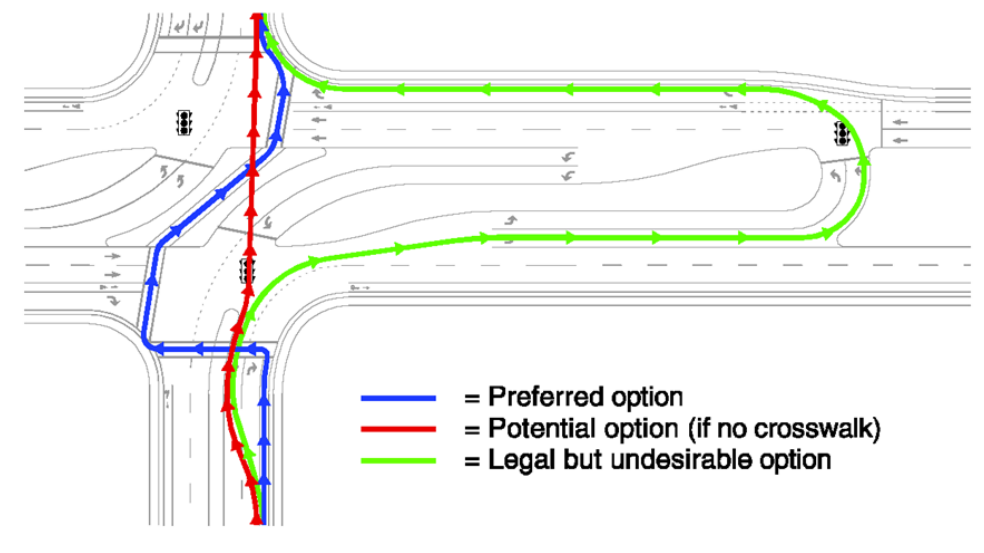14.6.4 Pedestrian and Bicyclist Considerations
RCUTs have benefits for pedestrians, which include a reduction in the number of conflict points and a reduction in cycle lengths (when signalized) by simplifying vehicular movements and eliminating left-turns. However, pedestrians and bicyclists traversing an RCUT intersection have safety challenges as well, similar to a MUT intersection. In general, an RCUT is better suited for relatively low pedestrian activity or, at least, relatively low volumes of pedestrians crossing the major street. The primary pedestrian crossing pattern is shown in
. The
provides guidance for additional pedestrian crossing alternatives.

Figure 14-22: Pedestrian Movements in a RCUT Intersection
Source: FHWA RCUT Informational Guide
Bicyclists on the major roadway travel through the RCUT the same way they travel through a conventional intersection. The options available for bicyclists approaching on the minor street are:
- Bicyclists follow pedestrian crossing rules (preferred option): Bicyclists approach the intersection and exit the street to the right and follow the pedestrian (“walk” /” don’t walk”) indications;
- If no crosswalk is available, a potential option is for the bicyclist to pass through/across the channelizing island; and
- Bicyclists following vehicle rules (legal but undesirable option): Bicyclists approach the intersection on the right and follow the vehicle signal indications. This option is legally permissible, but undesirable.
Ultimately, a thorough site assessment, an assessment of anticipated bicycle and pedestrian volumes, and an assessment of projected origins and destinations for pedestrians and bicyclists should be conducted to determine the preferred method of movement through the RCUT.
depicts the three options.

Figure 14-23: Minor Street Through Options for Bicycles
Source: FHWA RCUT Informational Guide